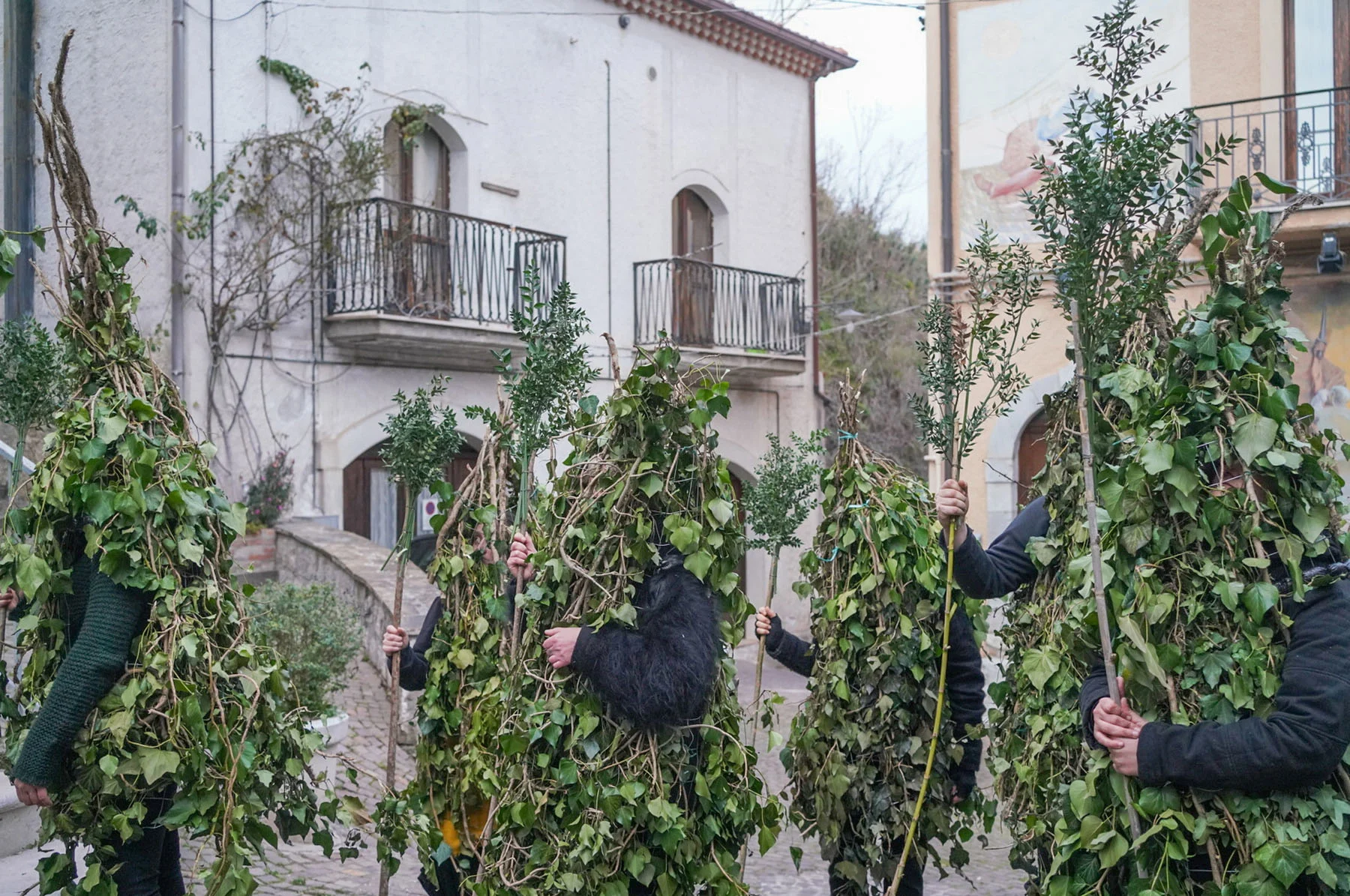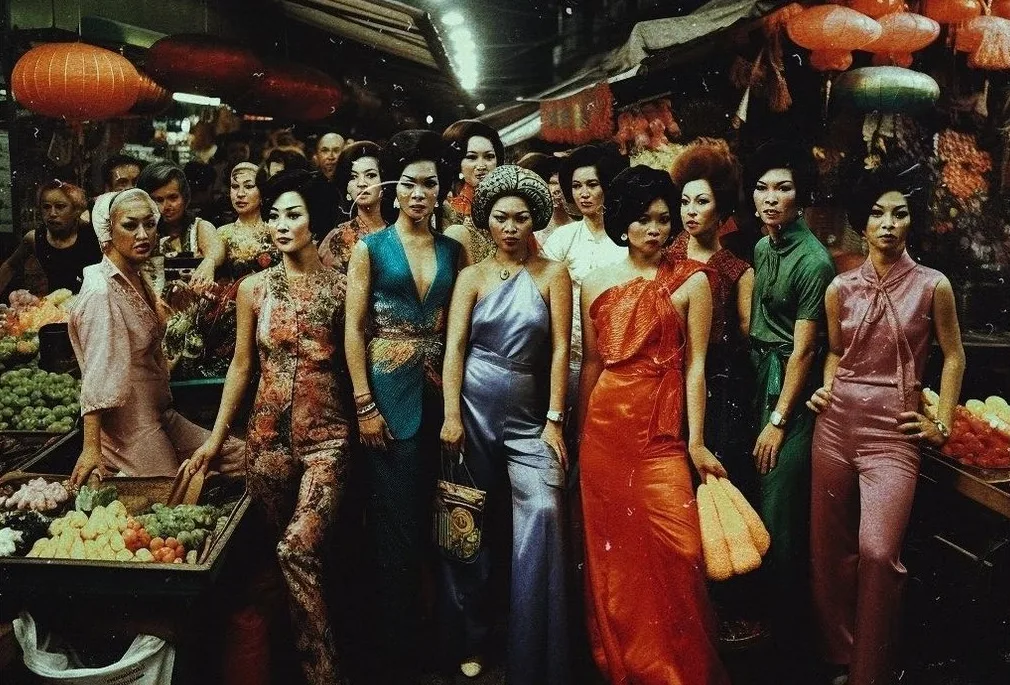

Self-taught Dominican painter Bony Ramirez once dreamed of being a children’s book illustrator, and it’s not hard to spot the marks those dreams left on his paintings now—vibrant colors, ornate scenery and oddly-proportioned characters with cartoonish eyes. But beneath this charming exterior, his works tackle heavier themes, telling stories about gender, colonial history and religious hegemony. He tells Dalia Al-Dujaili about the influence of strong women on his work, and the sense of creative freedom that came with being unable to attend art school.


In the world of Bony Ramirez, nothing is quite as it seems. Magical realism seeps into scathing social commentary while retaining a soft and feminine—though uncanny—aesthetic. Take one look at Ramirez’s large mixed-media pieces, and you won’t be surprised to learn that the artist once dreamed of being a children’s book illustrator but quickly found himself drawn to darker stories at the intersection of politics, gender and history.

Though Ramirez took art classes throughout his childhood, he is mostly self-taught; arriving in the US from the Dominican Republic at 13 years old, pursuing the arts seemed a luxury. “Of course, I never thought about being a full-time artist,” he says. “As [a family] that had just come to this country [the US], financially we were not very stable. I knew that I wanted to do something creative; I just didn’t think this was possible.” Oddly enough, not being able to attend art school freed Ramirez up, in a way. With no thoughts of pursuing a professional career in the arts, he focused on flourishing his own practice without external demands or constraints. This allowed the work to become what it is today. “That is where the work shifted a bit to be more mature, a bit more conceptual,” the artist tells me from his bright studio in a sub-freezing New Jersey.


I was never good at making things make sense, so I just embraced that. I don’t want to make them feel like humans.
Picking up his laptop to show me his current work in progress, Ramirez talks me through the process: the figures are made up of a combination of acrylic wash, oil, pastel and color pencil, which he then cuts out and glues onto a wood panel with a painted background. “I was never good at proportion,” remembers Ramirez of his early art days, so he looked to artists like Francis Bacon and Picasso who distorted human anatomy. In Ramirez’s work, the result is figures who are amorphous and have a liquid-like characteristic. “I was never good at making things make sense, so I just embraced that,” he says. “I don’t want to make them feel like humans.”
Alongside magical realism, surrealism is a major influence on Ramirez, which “adds a sense of uniqueness.” The artist also states that Caribbean symbolism is definitely part of the language that is essential to his work: “It references a lot of historical [moments] in the Caribbean, but also a lot of deeper psychological [ideas] that I don’t like to sugarcoat.” In many of Ramirez’s works, we see blood, weapons and melancholic faces despite the characters’ ornate and domestic environments. “And I think that’s where the magical realism comes into play, when I can do these very surreal compositions and still be able to tell that story without being so literal. I want [the viewer] to put a little bit more effort into actually looking at the work.”


Many of Ramirez’s works feature European colonial wallpapers, “and there’s always that kind of juxtaposition of the more contemporary Black and Brown figures with these colonial wallpapers,” he tells me, referencing pieces such as “The Annunciation.” This work in particular echoes Renaissance sensibilities, as a nude Caribbean woman lounges on a plush bed with extravagant furnishings. Ramirez is hesitant to label his work “decolonial” necessarily, though: “I think just the act of any artist that comes from a country that has been colonized working and living today could be considered decolonial,” he says.
Growing up Catholic and going to church almost every day, Ramirez was inundated with female religious figures such as the Virgin Mary, and Our Lady of Altagracia, one of the Dominicans’ patron saints, hence the overwhelming presence of women in his work. His mother’s presence, too, is seen throughout: “If you look closely, a lot of the female figures are in really strong positions of power, so I think I’ve always gravitated to really strong women.” Ramirez is aware of the male gaze, though as a queer man, this gaze is complicated and he attempts to subvert the European tradition of the female nude. “I make sure that they are in spaces [where] they are in control,” he says. “As much as I can’t control how the viewers see them, in my world I am always placing them in these positions of power or occupying space and being in custody of the space.”


“La Pinta, La Niña, La Santa María, ¿y Quién Más?” is an interesting example of Ramirez’s ability to critically observe and pull apart the effects of Christianity on the Caribbean and the traditions that it has. “That’s one of the things that came with colonization… The indigenous people that were on the islands did not follow [Christianity] and they were forced to convert in order to survive.” The European-style corset that one woman is being squeezed and tightened into is not only a reference to enforced hegemony, but also the legacy of Western beauty standards on colonized nations.
As well as exploring new mediums such as sculpture and different collage techniques, Ramirez is keen to paint more queer stories. “As I become more comfortable with my sexuality, I try to also put it in the work,” he says. “Cuánto Daría, Simplemente Amigos 1988” is a testament to this; the painting is filled with tension, as two Brown male bodies hold each other in the privacy of the tropical bush. It speaks volumes to societal pressures and ideas around masculinity in Caribbean culture, too.

On reflection, Ramirez says he has struggled to be taken seriously as a self-taught artist and thus seeks to constantly challenge his own artistic intentions, capabilities and the symbolism he imbues his work with, not shying away from hard realities despite the tender nature of the work. For artists who cannot afford art school or formal training, his advice is that “you have to believe in yourself and your work. It’s the tacky response that everybody gives, but it is definitely very real. What kept me going is the feeling that I had a story to tell, and I felt that it was important for that story to be heard.”

